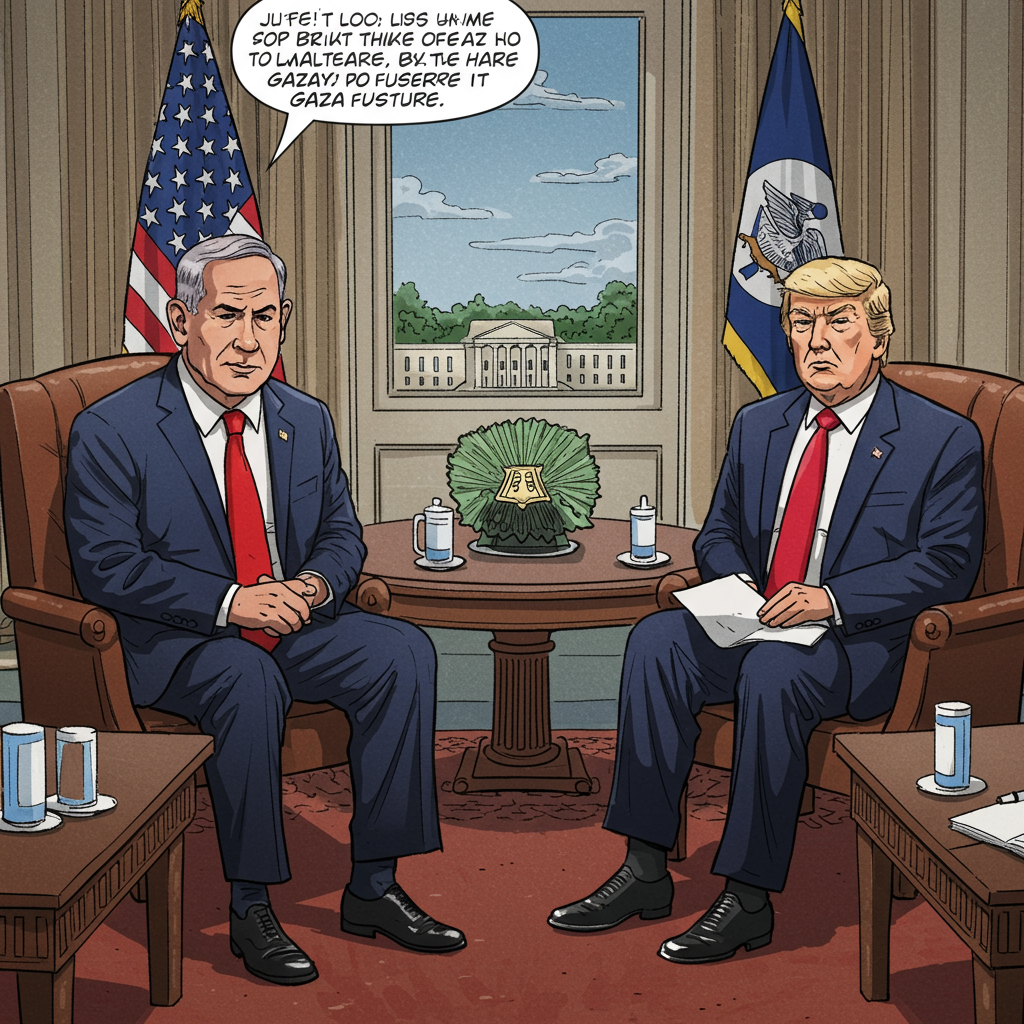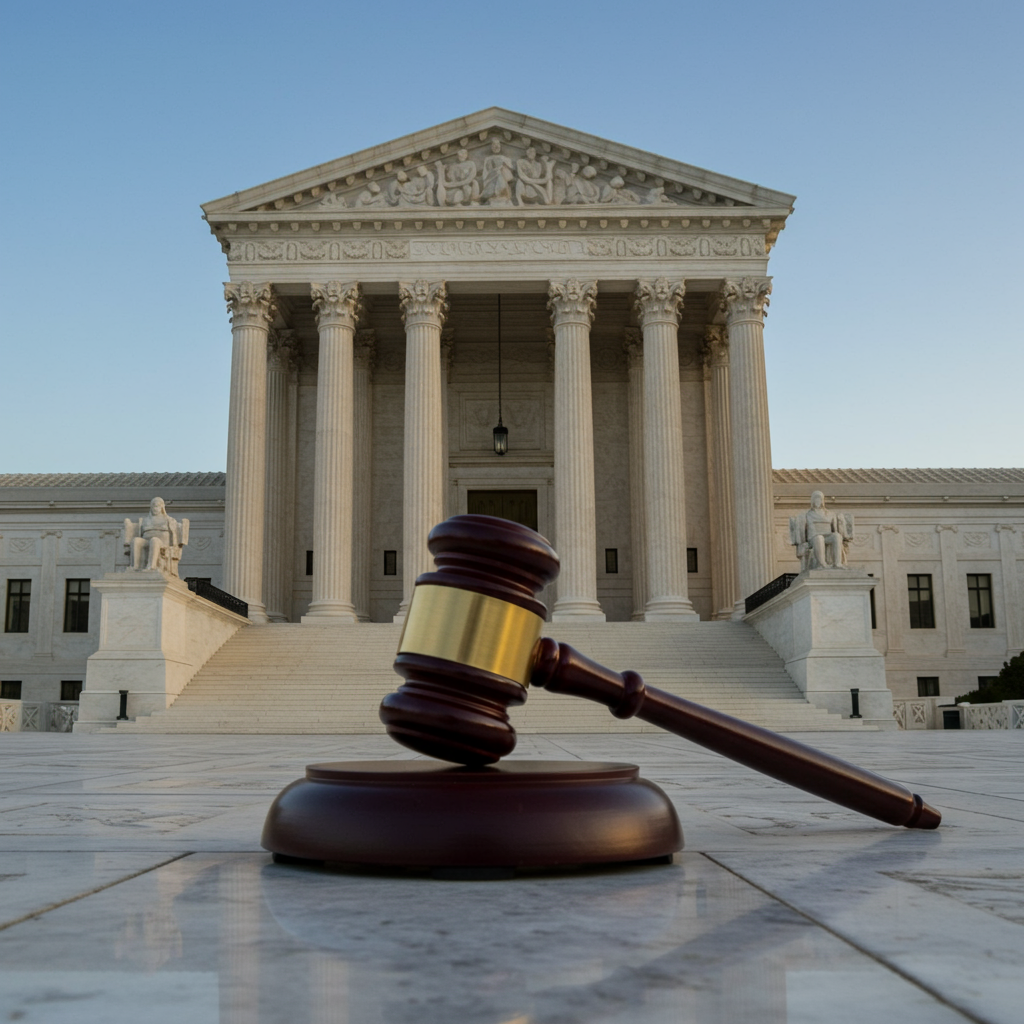As Israeli Prime Minister Benjamin Netanyahu prepared for a crucial meeting with President Donald trump in Washington D.C., a central, complex question loomed: what future awaits the Gaza Strip if hamas rule ends? This high-stakes discussion between the two leaders came amidst intense diplomatic efforts and regional tensions, highlighting the urgent need for a viable strategy beyond the current conflict. Experts warn that while dismantling Hamas is a clear objective, establishing a stable, legitimate alternative faces immense structural, political, and security hurdles. The path forward is fraught with challenges, demanding unprecedented coordination and navigating deep-seated divisions.
The High-Stakes Meeting: Gaza’s “Day After” Takes Center Stage
President Trump and Prime Minister Netanyahu were set to convene at the White House, with the pressing issue of Gaza’s governance post-Hamas topping their agenda. This meeting occurred as the U.S. intensified efforts to broker a ceasefire, reportedly involving a proposed 60-day truce. Trump had publicly urged Hamas to accept the deal, framing it as the definitive offer. Sources indicated that Qatar and Egypt were tasked with delivering the proposal to Hamas. This pressure from the U.S. administration, particularly from President Trump, has been a significant factor in driving negotiations, following previous instances where Trump’s intervention seemingly propelled reluctant parties towards agreement on hostage deals. The meeting underscored the U.S. commitment to resolving the conflict and the enduring alliance between the two nations, symbolized by recent U.S. military aid, including a significant arms sale.
Deconstructing the Search for a New Authority
Defining who governs Gaza after Hamas is arguably the most difficult puzzle. Experts consulted by Fox News Digital and synthesized with additional research propose a non-Hamas technocratic government as a potential alternative. This model would ideally comprise Palestinians with no ties to either Hamas or the Palestinian Liberation Organization (PLO). Critically, such an administration would require substantial backing from a coalition of key Arab states. Nations like Saudi Arabia, Egypt, Jordan, and the UAE are seen as essential partners in providing legitimacy, financial support, and stability.
According to John Hannah, a senior fellow at JINSA with experience across multiple administrations, dismantling Hamas and simultaneously building an alternative are inseparable tasks. “Part of how you win is by showing there’s a viable alternative,” Hannah stated, emphasizing the need for Gazans to envision a future free from Hamas control. While the new technocratic body should operate independently, a symbolic connection to the Palestinian Authority (PA) based in Ramallah could bolster its standing among Arab nations. This link might involve administrative functions, such as channeling salary payments, but without granting the PA ultimate decision-making power over Gaza.
Major Hurdles and Conflicting Demands
Securing Arab state involvement hinges on a fundamental condition: the complete defeat and disarmament of Hamas, going beyond a mere ceasefire. Ghaith al-Omari, a senior fellow at the Washington Institute for Near East Policy, stressed this point. “There is no Arab involvement without the defeat of Hamas. Not just a ceasefire – actual disarmament,” he noted. Arab nations also require a broader political framework, specifically a credible commitment towards a two-state solution, before fully engaging in Gaza’s reconstruction and governance. The PA’s potential “kosher stamp” is seen as necessary to meet the condition of acting under a Palestinian national umbrella, without which key players like Egypt would hesitate to intervene.
A critical challenge lies in gaining Israeli approval for any post-Hamas arrangement. Israeli security officials have made it clear that any deal must guarantee Israel’s continued access for counterterrorism operations to prevent Hamas or other militant groups from re-emerging. This could involve establishing buffer zones and perimeter security, alongside retaining the right for the IDF or Shin Bet to act on intelligence within Gaza, mirroring aspects of the security coordination seen in the West Bank.
The humanitarian situation in Gaza also presents an urgent backdrop, with international bodies calling for reforms to aid distribution amidst reports of violence and chaos. This underscores the immediate need for stable, legitimate structures on the ground.
Debating Alternative Governance Models
Beyond the technocratic government model, another proposal gaining some traction, particularly in Israeli and American circles, involves empowering local clans or community leaders to establish self-governing enclaves within Gaza. Joseph Braude, president of the Center for Peace Communications, suggests this approach might be a more realistic starting point than aiming for one unified administration immediately. He envisions local Gazans managing internal affairs in specific areas, with external forces securing the perimeter. Braude believes a pool of educated, non-Islamist Palestinians exists who could manage basic services if properly identified and vetted. He pointed to figures like Yasser Abu Shabab, a local militia leader attempting to form an anti-Hamas force, as potential examples.
However, skepticism regarding the viability of clan-based governance is significant among other experts. Al-Omari views these groups as fragmented and lacking the necessary legitimacy or cohesion for broad rule. Dr. Michael Milstein of Tel Aviv University notes that past attempts to promote clans as alternatives have failed, citing the example of the Doghmush clan whose leaders were reportedly executed by Hamas. Milstein asserts that Hamas still largely controls the public space, and many clans retain loyalty to the group, making them unsuitable as a cohesive, legitimate alternative force for the entire Strip.
The American Role and Regional Complexities
Successfully navigating the myriad challenges requires robust American leadership. Hannah emphasized that the United States is uniquely positioned to bridge the deep divides among Israel, Arab states, and international actors due to its relationships, resources, and trust. He sees President Trump as personally motivated to seek a resolution. The role of external players like Qatar is seen as complex; while providing much-needed funds, its historical relationship with Hamas necessitates strict conditions on financial flows through trusted channels. The United Nations, particularly UNRWA, is largely viewed by some experts as unable to take on an operational role in governing Gaza’s economy or education, though it might endorse a broader plan.
The discussions also unfold against a backdrop of heightened regional tensions, including strained relations with Iran following collapsed nuclear talks and recent US-led strikes on Iranian targets. Houthi actions from Yemen targeting Israel further underscore the volatile regional landscape. The potential for broader Saudi-Israel normalization, a goal pursued by the Trump administration, is deeply intertwined with the Gaza outcome. However, Saudi Arabia has firmly rejected proposals for Palestinian displacement and maintains that a credible path to a two-state solution remains a non-negotiable condition for normalization, a position that contrasts with reported views favoring displacement and could pose a significant point of disagreement.
The Long Road Ahead
Ultimately, fostering a viable alternative to Hamas requires identifying and empowering Palestinian leadership willing to prioritize constructive development over hostility. As one expert suggested, the challenge and opportunity lie in supporting individuals who can build a future for Gazans. The meeting between Netanyahu and Trump served as a critical moment to confront these complexities. While the need for a post-Hamas plan is urgent, developing one that satisfies Israeli security requirements, secures essential Arab backing under specific conditions, overcomes internal Palestinian divisions, and provides genuine hope for Gaza’s population remains an exceptionally difficult diplomatic and strategic endeavor.
Frequently Asked Questions
What are the main proposals discussed for governing Gaza after Hamas?
Experts primarily discuss two potential models. One is a non-Hamas technocratic government composed of independent Palestinians, requiring backing from key Arab states like Saudi Arabia, Egypt, Jordan, and the UAE, potentially with a symbolic link to the Palestinian Authority (PA) for legitimacy. The other proposal involves empowering local clans or community leaders to manage smaller, self-governing enclaves within Gaza, with external forces providing security. However, the clan-based approach faces significant skepticism regarding legitimacy and cohesion, with Hamas still controlling public spaces and previously suppressing rival clans.
Why is securing Arab state support crucial for a post-Hamas Gaza plan, and what are their conditions?
Arab state support is vital for providing legitimacy, financial aid for reconstruction, and contributing to regional stability. Countries like Saudi Arabia have indicated willingness to help, but their involvement is contingent on specific conditions. A key demand is the complete defeat and disarmament of Hamas, not just a ceasefire. Furthermore, many Arab states, particularly Saudi Arabia, require a credible political framework that includes a path towards a two-state solution with the Palestinians. They also firmly reject any proposals for Palestinian displacement from Gaza, viewing it as incompatible with potential normalization efforts with Israel.
What are the biggest obstacles to establishing a stable alternative to Hamas rule in Gaza?
The obstacles are multifaceted. A major challenge is securing Israeli security guarantees, ensuring mechanisms like buffer zones and retained access for counterterrorism operations. Politically, finding legitimate and cohesive Palestinian leadership that is neither affiliated with Hamas nor viewed with suspicion by Israel and Arab states is difficult. There are also significant divisions within the Palestinian landscape and a lack of broad consensus on a future vision. Gaining sufficient Arab backing is complex due to conditions related to Hamas’s defeat and the need for a political horizon like the two-state solution. Lastly, integrating external aid and resources effectively while preventing misuse, particularly navigating complex relationships with entities like Qatar, adds another layer of difficulty to creating a functional post-Hamas administration.




